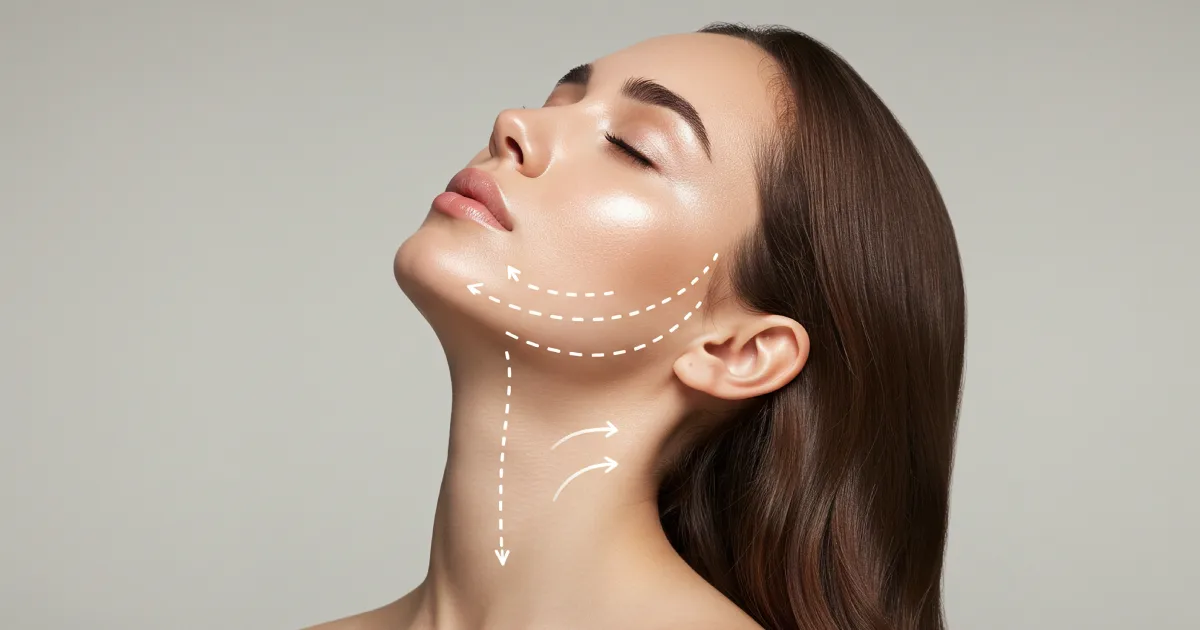Botox and dermal fillers are two of the most popular non-surgical treatments available today for those looking to combat signs of aging. Both treatments offer unique benefits: Botox is renowned for its ability to reduce the appearance of dynamic wrinkles which occur due to repetitive facial movements, while dermal fillers are sought after for their capacity to restore lost volume and smooth out static wrinkles. Choosing between these treatments depends on the specific aging concerns you wish to address. Here’s what you should know.
What are Botox and Dermal Fillers?
Both Botox and dermal fillers are minimally invasive treatments offering cosmetic improvements with a relatively quick procedure time and minimal downtime, making them popular choices for individuals seeking anti-aging solutions. They are ideal for individuals seeking subtle facial enhancement without the commitment or recovery associated with surgical treatments. While both treatments address signs of aging, they do so in different ways and are often used in complementary manners to achieve a more youthful appearance.
Botox
Botox, a brand name for a type of botulinum toxin, is a purified substance derived from bacteria. It is primarily used in cosmetic treatments to reduce the appearance of dynamic wrinkles. Dynamic wrinkles appear due to muscle movements, such as crow’s feet, forehead lines, and frown lines between the eyebrows. The mechanism by which Botox works involves the temporary paralysis of muscle activity. By injecting small, controlled amounts of Botox into specific muscles, the nerve signals that cause muscles to contract are blocked, thus preventing the formation or deepening of wrinkles in the treated area.
Dermal Fillers
Dermal fillers, on the other hand, are injectable substances designed to add volume and fullness to areas that have thinned due to aging. Fillers work by literally filling in the area underneath the skin. This can smooth out deep lines and wrinkles, restore volume to hollowed areas like cheeks or temples, enhance the contours of the face, and improve the appearance of scars. Fillers are particularly effective for static wrinkles, which are visible even when the face is at rest, such as nasolabial folds (the lines running from the nose to the corners of the mouth) and marionette lines (the lines from the corners of the mouth downward).
Applications and Treatment Areas: Botox Vs. Dermal Fillers
Both Botox and dermal fillers serve specific yet complementary purposes in facial aesthetics. While Botox is more about reducing muscle activity to prevent wrinkle formation, fillers are about adding volume and smoothing out deep-set lines. Properly administered, they can produce subtle yet effective results, rejuvenating the face without surgical interventions.
Botox Applications
Botox is widely recognized for its effectiveness in treating dynamic wrinkles, which are lines and folds that appear due to the natural movements of the face. Typical areas treated with Botox include:
- Forehead Lines: These are horizontal lines that form when raising the eyebrows.
- Frown Lines: Also known as glabellar lines, these appear between the eyebrows when frowning.
- Crow’s Feet: These lines form at the corners of the eyes and become more pronounced with age, especially when smiling or squinting.
Dermal Filler Applications
Dermal fillers primarily address volume loss and static wrinkles, which are visible even when the face rests. They are also used to enhance and contour facial features. Common treatment areas include:
- Nasolabial Folds: These lines run from the nose’s sides to the mouth’s corners.
- Marionette Lines: Located below the corners of the mouth, these lines can give the mouth a downturned, sad appearance.
- Cheeks and Midface: Fillers can add volume to the cheeks, enhancing the overall shape and contour of the face.
- Lips: Fillers can be used to plump thin lips, define lip contours, or smooth out vertical lines around the lips.
Additionally, dermal fillers can be applied to rejuvenate other areas, such as the jawline, chin, and under-eye hollows, providing a more comprehensive facial enhancement.
Procedure and What to Expect: Dermal Fillers Vs. Botox
While both Botox and dermal fillers are delivered through injections and used in cosmetic treatments to enhance facial aesthetics, their procedures differ significantly in terms of techniques, target areas, and expected outcomes.
Botox Procedure:
- Target: Specifically aimed at muscles that cause dynamic wrinkles, such as crow’s feet, forehead lines, and frown lines.
- Injection Technique: Involves precise, targeted injections into the muscles, using a very fine needle for minimal discomfort.
- Duration and Aftercare: The entire process is swift, often completed within 10 minutes, and requires no downtime, although patients are advised not to rub the treated areas for 24 hours to prevent dispersion of the toxin.
Dermal Filler Procedure:
- Target: Used to address volume loss and static wrinkles, with applications including lips, cheeks, and nasolabial folds.
- Injection Technique: Fillers are injected at varying depths and more broadly across the treatment area to restore volume or enhance contours, sometimes requiring multiple injection points.
- Duration and Aftercare: The procedure can take up to an hour, depending on the extent of the area treated. Patients may experience mild swelling, but like Botox, there is minimal downtime.
Choosing the Right Option for You
Choosing the right option between Botox and dermal fillers largely hinges on understanding your specific aesthetic goals and your skin’s natural characteristics. Here are several factors to consider when deciding which treatment might be best for you:
Assess Your Concerns and Desired Outcomes:
- Dynamic vs. Static Wrinkles: Botox may be the more suitable option if your primary concern is dynamic wrinkles caused by facial expressions, such as crow’s feet or forehead lines. Dermal fillers could be more effective if you want to address loss of volume or static wrinkles, visible without facial expressions, like nasolabial folds or sunken cheeks.
- Volume Enhancement: Fillers are the go-to option to enhance features like lips or cheeks, as they provide volume and contouring that Botox does not.
Consultation with a Professional:
- Expert Evaluation: A consultation with a qualified dermatologist or cosmetic surgeon can provide you with a detailed assessment of your facial anatomy and the most feasible changes. They can offer a tailored treatment plan based on your skin’s condition and your aesthetic preferences.
- Customization: Each treatment can be highly customized. A professional can determine the type, location, and amount of product (Botox or filler) needed to achieve the best results.
Takeaway
Discover the best version of yourself with EG Aesthetics. Whether you’re curious about smoothing lines with Botox or restoring volume with dermal fillers, our expert team guides you through your options. Take the first step towards feeling radiant and confident in your skin. Connect with us today for a consultation tailored just for you. Let’s bring your aesthetic aspirations to life!



